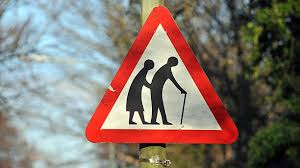FRAILTY and EXERCISE
We do not stop exercising because we grow old – we grow old because we stop exercising. Kenneth Cooper.
What is Frailty?
Frailty in old age is a huge and growing problem and the role of exercise in the prevention and treatment of frailty is one of the most important things I have to tell you about in my Blogs. This affects all of us and decides the pattern not only of our futures but also of the social and financial health of the nation.
Frailty has been defined as a “clinically recognisable state of increased vulnerability resulting from aging-associated decline in reserve and function across multiple physiologic systems such that the ability to cope with every day or acute stressors is compromised”! In brief, old and feeble. Frailty is the condition of general weakness and debility which is often seen as an inevitable consequence of the ageing process. Some of the essential features include low grip strength, low energy, slowed walking speed, low physical activity, general weakness and unintentional weight loss. However frailty is emphatically not an inevitable consequence of getting old.
What cause frailty
Frailty is closely allied to loss of muscle tissue. As we age we all lose muscle mass and strength. When severe this condition is called sarcopenia. A degree of age-related muscle loss is unavoidable but the rate at which this happens is largely dependent on how much exercise we take. Frailty is also a result of the degenerative conditions which can affect us as we get older – such as obesity, diabetes, heart disease, dementia, all of which are associated with inadequate physical activity. These conditions then reduce physical activity further resulting in more loss of muscle tissue – the perfect vicious circle.
The implications of frailty
“The accelerated loss of aerobic capacity with advancing age has important clinical ramifications. The ability of older persons to function independently in the community depends largely on maintenance of sufficient aerobic capacity and muscle strength to perform daily activities. The perceived degree of effort and breathlessness of a given activity is determined by its oxygen cost relative to a person’s peak VO2. Tasks perceived as requiring substantial effort in deconditioned individuals tend to be avoided, setting off a vicious circle of further reduction in aerobic capacity, causing further avoidance of physical activity and further loss of muscle mass and strength.”1 This is what frailty is all about – it is, at least in part, a lifestyle choice.
Prevention of frailty
You will not be surprised to learn that prevention of frailty depends on maintaining physical fitness with good levels of physical activity. Several recent publications have confirmed that it is never too late to start exercising. One in particular, “Currency for retirement. Investing in physical capital” emphasises the opportunities presented by retirement. I will tell you more about this idea in a future Blog.
1. DOI: 10.1161/CIRCULATIONAHA.105.545459
Subscribe to the blog
Categories
- Accelerometer
- Alzheimer's disease
- Blood pressure
- BMI
- Cancer
- Complications
- Coronary disease
- Cycling
- Dementia
- Diabetes
- Events
- Evidence
- Exercise promotion
- Frailty
- Healthspan
- Hearty News
- Hypertension
- Ill effects
- Infections
- Lifespan
- Lipids
- Lung disease
- Mental health
- Mental health
- Muscles
- Obesity
- Osteoporosis
- Oxygen uptake
- Parkinson's Disease
- Physical activity
- Physical fitness
- Pregnancy
- Running
- Sedentary behaviour
- Strength training
- Stroke
- Uncategorized
- Walking



It’s easy to make excuses, so making a regular time at least twice a week will will help to banish the excuses.
If the weather is too bad to go for a walk, walk inside. If you have stairs, walking up & down as many times as you can & repeat after a rest.